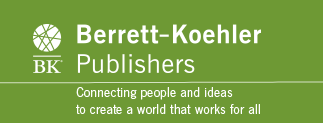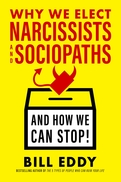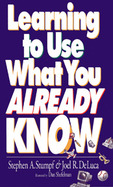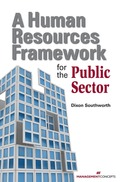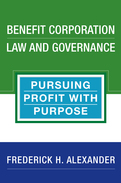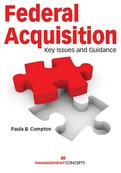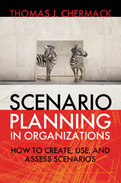Democracy is under siege. The reason isn't politics but personalities: too many countries have come under the sway of high-conflict people (HCPs) who have become politicians. Most of these high-conflict politicians have traits of narcissistic personality disorder, antisocial (i.e., sociopathic) personality disorder, or both. This is the first and only guide for identifying and thwarting them.
HCPs don't avoid conflict, they thrive on it, widening social divisions and exacerbating international tensions. Eddy, the world's leading authority on high-conflict personalities, explains why they're so seductive and describes the telltale traits that define HCPs—he even includes a helpful list of forty typical HCP behaviors.
Drawing on historical examples from Hitler, Stalin, Mao, and Nixon to Trump, Maduro, and Putin, Eddy shows how HCPs invent enemies and manufacture phony crises so they can portray themselves as the sole heroic figure who can deal with them, despite their inability to actually solve problems. He describes the best ways to expose HCPs as the charlatans they are, reply to their empty and misleading promises, and find genuine leaders to support. Eddy brings his deep psychotherapeutic experience to bear on a previously unidentified phenomena that presents a real threat to the world.
They clarify previously confusing thoughts, simplify complex situations, and point the way to new and better ways of doing things.
Is there a way to encourage the kind of "aha!" perceptions that leave us feeling enlightened and empowered? Are there methods for facilitating the flashes of understanding that make us holler "eureka!" or smile with quiet contentment? Though insights may feel like they come out of the blue, Stumpf and DeLuca make us aware of the process behind the flash so that we can stimulate our capacity for learning and growth.
Beginning with the premise that each of us knows more than we think we do, Stumpf and DeLuca provide a reflective process that integrates all of our conscious and unconscious resources. They share their insights, grounded in common daily work-life situations, to prompt readers' own perceptions into everything from getting along with coworkers to being a visionary leader, understanding the meaning of service in a job, coping with technological change, and remaining competitive in the global economy.
Organized to mirror the insight-to-learning process, each chapter of Learning to Use What You Already Know starts with an insight, provides an example for reflection, summarizes the context with a lesson statement, and concludes with questions to stimulate the readers' thoughts. Examples and anecdotes from the authors' lives show how they arrived at an insight and, since new concepts do not always emerge in words, key ideas are whimsically illustrated.
With humor, and, well, insight, Stumpf and DeLuca show readers how to become their own source of lifelong learning. The tools in Learning to Use What You Already Know help readers turn what they've learned in order to survive into the creative understanding that will help them thrive personally and professionally.
- How to turn the knowledge, experience, and skills we take for granted into meaningful insights
- A practical and fun-to-use guide to increasing personal and interpersonal effectiveness at work
- Ways to cultivate insights-about problems, people, and situations-that bring enjoyment and build the mind's capacity to interact with people and ideas
What makes a good worker? Why do some people naturally do well at their jobs while others struggle? These questions are at the heart of the human resource (HR) profession. And while there is no shortage of theories about how people achieve success, no one has explained the entire body of HR theories. Until now.
In A Human Resources Framework for the Public Sector, Dixon Southworth offers a fresh, new perspective on HR management with the first comprehensive theoretical framework for work performance, tying human resource theories, concepts, and concerns to public administration. With the introduction of the Work Performance Framework (WPF), Southworth offers a roadmap for work performance in the nonprofit and public sectors that focuses on three fundamental objectives of HR programs and services: build human resource capacity, build performance, and build community.
Corporations today are embedded in a system of shareholder primacy. Nonfinancial concerns—like worker well-being, environmental impact, and community health—are secondary to the imperative to maximize share price. Benefit corporation governance reorients corporations so that they work for the interests of all stakeholders, not just shareholders.
This is the first authoritative guide to this new form of governance. It is an invaluable guide for legal and financial professionals, as well as interested entrepreneurs and investors who want to understand how purposeful corporate governance can be put into practice.
2009
Federal Acquisition: Key Issues and Guidance is an essential guide to understanding and working within the complex world of federal government contracting. It offers brief but comprehensive explanations of the major phases and essential tasks in the contracting process. Written in a clear and easy-to-understand style, this resource provides the perfect foundation for building a thorough understanding of federal contracting.
Author Paula Compton focuses on the most problematic areas of federal contracting, highlighting the deficiencies cited most often by the Government Accountability Office and Inspector General audits and reports, such as:
• Not performing market research
• Inadequate independent government cost estimates
• Violation of the bona fide needs rule
• Insufficient statements of work
• Inadequate price or cost analysis
Anyone new to government acquisition will find that reading this book is the ideal first step on the path to understanding the federal acquisition process. Seasoned contract professionals will find it an excellent quick review.
-
Offers a comprehensive review of both the theory and practice of scenario planning
-
The only scenario planning book to address scenario implementation and assessment
-
Includes a casestudy to illustrate how the scenario planning system is applied in the real world
Scenario planning helps leaders, executives and decision-makers envision and develop strategies for multiple possible futures instead of just one. It enables organizations to become resilient and agile, carefully calibrating their responses and adapting quickly to new circumstances in a fast-changing environment.
This book is the most comprehensive treatment to date of the scenario planning process. Unlike existing books it offers a thorough discussion of the evolution and theoretical foundations of scenario planning, examining its connections to learning theory, decision-making theory, mental model theory and more. Chermack emphasizes that scenario planning is far more than a simple set of steps to follow, as so many other practice-focused books do -- he addresses the subtleties and complexities of planning. And, unique among scenario planning books, he deals not just with developing different scenarios but also with applying scenarios once they have been constructed, and assessing the impact of the scenario project.
Using a case study based on a real scenario project, Chermack lays out a comprehensive five phase scenario planning system -- project preparation, scenario exploration, scenario development, scenario implementation, and project assessment. Each chapter describes specific techniques for gathering and analyzing relevant data with a particular emphasis on the use of workshops to encourage dialogue. He offers a worksheet to help readers structure and manage scenario projects as well as avoid common pitfalls, and a discussion, based in recent neurological findings, of how scenario planning helps people to overcome barriers to creative thinking.
